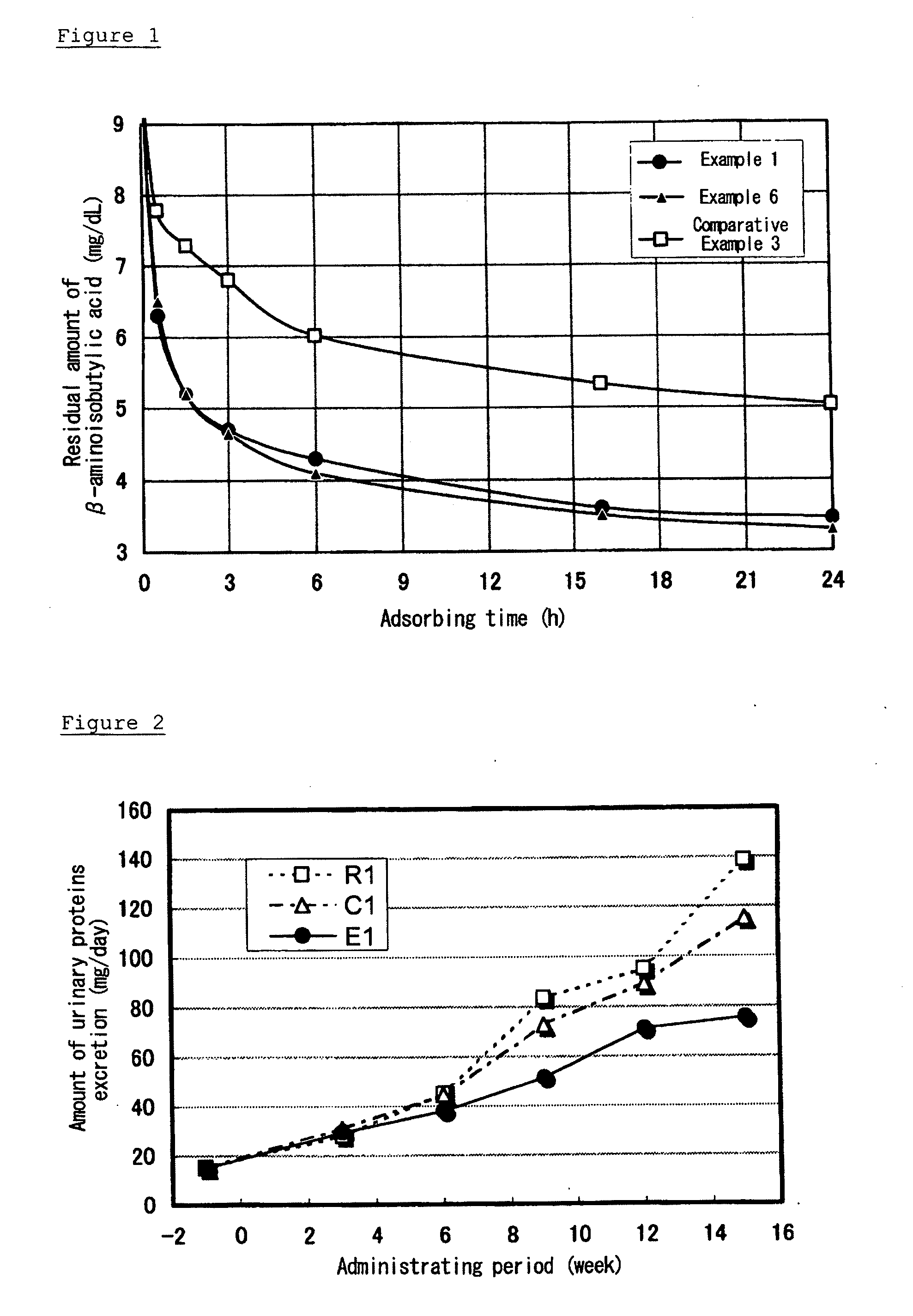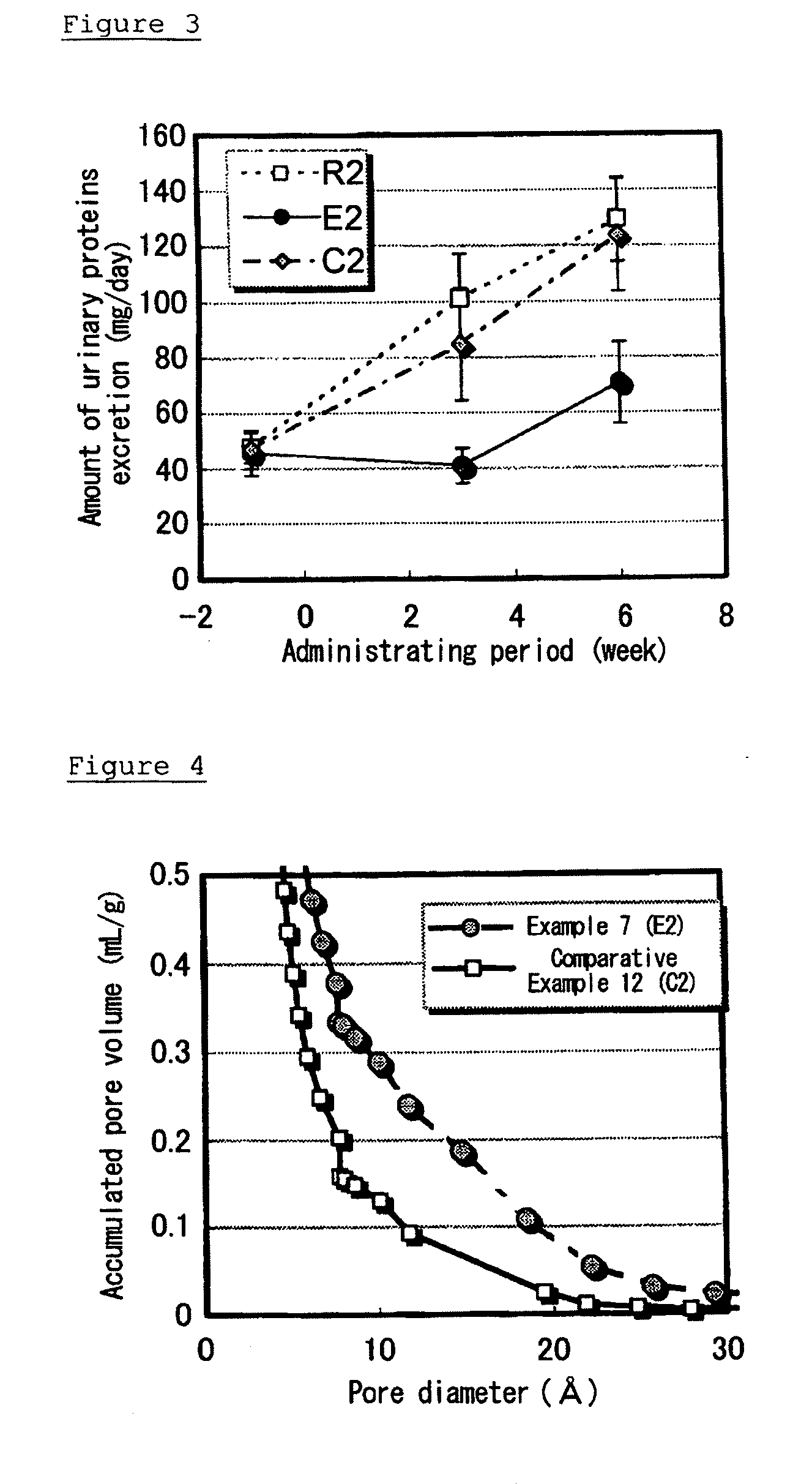Adsorbent for an oral administration, and agent for treating or preventing renal or liver disease
a technology for adsorbing agents and an oral administration, which is applied in the direction of cellulosic plastic layered products, natural mineral layered products, drug compositions, etc., can solve the problems of defective organ replacement, serious problems, and high physical, mental and economic burdens of patients, and achieve excellent initial adsorption, treatment or preventing renal or liver disease, and high adsorption. , the effect of excellent adsorption
- Summary
- Abstract
- Description
- Claims
- Application Information
AI Technical Summary
Benefits of technology
Problems solved by technology
Method used
Image
Examples
example 1
[0102]Deionized water (220 g) and methyl cellulose (58 g) were charged into a 1 L separable flask. Further, 105 g of styrene, 184 g of divinyl benzene with a purity of 57% (57% divinylbenzene and 43% ethylvinyl benzene), 1.68 g of 2,2′-azobis(2,4-dimethylvaleronitrile), and 63 g of 1-butanol as a porogen were added thereto. Then, a replacement with a nitrogen gas was carried out. The two-phase system was stirred at 200 rpm, and heated to 55° C., and then allowed to stand for 20 hours. The resulting resin was filtered, and dried in a rotary evaporator. In a vacuum dryer, 1-butanol was removed from the resin by distillation, and the product was dried under a reduced pressure at 90° C. for 12 hours to thereby obtain a spherical porous synthetic resin having an average particle diameter of 180 μm. A specific surface area of the porous synthetic resin was about 90 m2 / g.
[0103]The resulting spherical porous synthetic resin (100 g) was charged into a reactor having a grating, and treated to...
example 2
[0105]The procedures of Example 1 were repeated except that the two-phase system was stirred at 100 rpm, instead of 200 rpm, to obtain a surface-modified spherical activated carbon. The properties of the resulting surface-modified spherical activated carbon are listed in Tables 1 and 2.
example 3
[0106]The procedures of Example 1 were repeated except that the two-phase system was stirred at 150 rpm, instead of 200 rpm, to obtain a surface-modified spherical activated carbon. The properties of the resulting surface-modified spherical activated carbon are listed in Tables 1 and 2.
PUM
| Property | Measurement | Unit |
|---|---|---|
| specific surface area | aaaaa | aaaaa |
| diameter | aaaaa | aaaaa |
| pore diameter | aaaaa | aaaaa |
Abstract
Description
Claims
Application Information
 Login to View More
Login to View More - R&D
- Intellectual Property
- Life Sciences
- Materials
- Tech Scout
- Unparalleled Data Quality
- Higher Quality Content
- 60% Fewer Hallucinations
Browse by: Latest US Patents, China's latest patents, Technical Efficacy Thesaurus, Application Domain, Technology Topic, Popular Technical Reports.
© 2025 PatSnap. All rights reserved.Legal|Privacy policy|Modern Slavery Act Transparency Statement|Sitemap|About US| Contact US: help@patsnap.com


